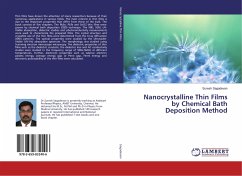Metal oxide semiconductors (MOS) are well known as multi-function materials and gas sensing application employing MOS is one of the most studied areas. The sensing mechanism depends on the change of the resistance of the MOS in the presence of the gas under test, in which the gas adsorption led to a charge transfer between the chem isorption oxygen and the MOS surface.The oxygen molecules from the ambient atmosphere are initially adsorbed at the MOS surface follows by the extraction of electron from the conduction band of the MOS material. The oxygen molecule is then converted to a single or a double oxygen ion and become ionosphere on the surface. This leads to a decrease in electron concentration in the material and consequently, the increase in resistance. Nano-structure ZnO is a promising material for chemical gas sensors because of its large surface-to-volume ratio, which improve its response. ZnO gas sensors were recently studied exten-sively due to the simplicity of its preparation, high chemical stability and it has been prepared by different methods, such as radio frequency (RF) sputtering
Bitte wählen Sie Ihr Anliegen aus.
Rechnungen
Retourenschein anfordern
Bestellstatus
Storno








